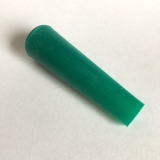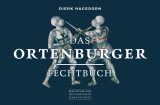Produktbeschreibung
Fighting Skills of the Medieval Gaelic Warrior.
Described as “very great scorners of death” by the English writer Edmund Spenser, the Gaelic warriors of medieval Ireland and Scotland included aristocratic mounted skirmishers as well as the guerrilla fighters known as kerns or caterans, and the ferocious galloglass and redshank mercenaries armed with battle-axes and two-handed swords.
One of the first works to focus on the weapons and fighting skills of the medieval Gaelic warrior, Scorners of Death offers instruction in the use of the medieval Gaelic sword, sword and buckler, two-handed sword and battle-axe (including both the Lochaber axe and the sparth axe of Ireland), as well as a detailed discussion of the warriors who used these weapons and the strategic context in which they fought.
Although there are no technical manuals for the use of these weapons, the authors have developed a training method based on the best historical evidence available. These techniques will be useful for reenactors portraying the Scottish highland or Irish warriors of the Middle Ages, especially in the time period between 1300 and 1600, as well as for any practitioners of Historical European Martial Arts (or HEMA) with an interest in Scottish or Irish history.
This book was created by a team of researchers associated with the Cateran Society, including:
- Christopher Scott Thompson, founder of the Cateran Society and author of several books on the Highland broadsword and Gaelic martial culture.
- Heiko Große, 2nd President of the Cateran Society and Head and founder of the Broadsword Academy Germany. He wrote the first book on Highland Broadsword in the German langauge, and several articles on Highland and Military Swordsmanship.
- Ken Pfrenger, founding member of the Cateran Society, better known as a founder of Cumann Bhata and NEOHEMAS.
- Randal Gustitis, Level II Mentor in the Cateran Society, head of Broadsword Academy Pennsylvania and student of many martial arts disciplines from all around the world.
Contents:
- Dedication
- About This Book
- About the Authors
- Introduction: The Three Orders of Gaelic Warfare
- The Profession of Violence in Gaelic Society
- Rock, Paper, Scissors
- Ridir, Buannach and Ceatharn
- The Image of Ireland
- The New Scots
- Rise of the Broadsword
- Weapons of the Ceatharn
- The Sword
- Targets of Attack
- Basics of the Claidheamh
- Ten Lessons for the Sword
- Cudgel
- Sword and Shield
- Basics of the Sword and Buckler
- Ten Lessons for Sword and Buckler
- Other Shields
- Irish Sword and Steel Gauntlet
- The Axe
- The Dirk
- The Spear
- The Bow
- Terminology
- Selecting a Bow
- Learning to Shoot
- Safety Rules
- Stance and Form
- Grip
- Drawing the Bow
- Anchor Point
- Aiming
- The Release
- Follow Through
- For More Information
- Slings and Darts
- The Sword
- Weapons of the Buannach
- The Two-Handed Sword
- Guards
- Footwork
- Cuts
- Thrusts
- Gripping the Sword
- Flourishes
- The Ten Flourishes
- Ten Lessons for the Two-Handed Sword
- The Battle-Axe
- Anatomy of a Tuagh Catha
- How to Hold the Tuagh Catha
- Guards
- Attacking with the Axe
- Defenses and Returns
- Using the Butt of the Axe
- Ten Flourishes for the Axe
- Ten Lessons for the Axe
- Additional Maneuvers for the Charge
- Note on Safety
- The Two-Handed Sword
- Weapons of the Ridir
- Fighting on Horseback
- The Spear on Horseback
- The Sword on Horseback
- Conclusion
- Appendix 1: The Black Tailor of the Axe
- Appendix 2: Spiritual Power of the Sword
- Appendix 3: Axes of Edinburgh
- Appendix 4: Some Gaelic Terms
- Bibliography
Kundenrezensionen:
Schreiben Sie die erste Kundenrezension!






